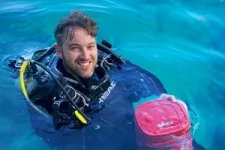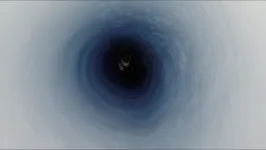(Press-News.org) AUGUSTA, Ga. (May 2, 2023) – Inhibiting a tiny RNA whose levels significantly increase with age, along with problems like weaker bones and sagging muscles, may be a way to keep our bodies more youthful and healthy, scientists say.
MicroRNAs help regulate gene expression and consequently the function of our cells, and several, including one called microRNA-141-3p, have been implicated in the ills of aging, like increasing levels of potentially damaging chronic inflammation and that shrinking muscle mass.
“When we age in all these complications like chronic inflammation, muscle loss, bone loss, this microRNA is elevated,” says Sadanand Fulzele, DVM, PhD, aging researcher in the Department of Medicine at the Medical College of Georgia at Augusta University. “We wanted to suppress it.”
In what appears to be the first study of its kind, Fulzele and his colleagues used an inhibitor he had specifically designed to block microRNA-141-3p in aged mice. These types of engineered molecules are called antagomirs, and while at the moment restricted to research, could one day have therapeutic value for patients, says Fulzele, corresponding author of the study in the journal Aging and Disease.
The mice, who would equate to humans in their 60s, were treated for three months with twice-weekly subcutaneous injections of this antagomir, a regimen that could be easily adapted for humans.
The scientists then looked at changes that occurred in the blood, the spleen whose tasks include regulating levels of infection-fighting white blood cells, as well as the bone and muscle. They found a more youthful profile everywhere they looked.
In the spleen, for example, they saw more inflammation-reducing immune cells called macrophages (M2) rather than their inflammation-promoting counterpart (M1). M2s also have been reported to support tissue repair. The blood had lower levels of inflammation-promoting proteins called cytokines, and the microstructure of the bone was more solid and muscle fiber size was bigger.
They found that microRNA-141-3p regulates expression of AUF1, a “good” gene whose many jobs include regulating the stability of messenger RNA, which plays a role in the proteins DNA ultimately makes. AUF1 helps protect younger people from making so many proinflammatory products like IL-6 which contribute to chronic, damaging inflammation. It does the same for cell senescence when cells become less able to function normally and divide but typically don’t die. Higher levels of microRNA-141-3p mean less of the protective AUF1 and blocking the microRNA enabled higher levels and consequently less inflammation and senescence.
Fulzele notes that like with everything else in the body, the effect of microRNA-141-3p has to do with its level of expression and in aging its high. Their latest findings point toward reducing its expression as a possible strategy to improve immune, bone and muscle health with age, Fulzele says.
Levels of inflammation and oxidative stress are an indicator of overall health at any age. Chronic inflammation and chronic oxidative stress are hallmarks of an aging body and important players in the negative changes that can result.
With age, the repair/replacement capacity of cells is known to decrease so that, for example, bone loss begins to outpace new bone formation. Meanwhile inflammation, essential to healing but destructive at chronic, high levels, creeps upward. Resulting problems can range from increasing physical frailty to an increased incidence of diseases like cancer, cardiovascular disease and dementia.
Fulzele notes that his research is geared toward finding ways to prevent damage, rather than trying to restore a healthy normal. Some of his next steps include looking at how blocking the microRNA impacts other age-related concerns like cognition and giving the microRNA-141-3p-specific antagomir for a longer timeframe. He noted they did not identify any overt side effects over the three months of the study.
Fulzele and his colleagues reported in 2018 evidence that with age, expression of microRNA-141-3p went up while the key signaling molecule stromal cell derived factor 1, or SDF-1, that helps stem cells make healthy bone and muscle, goes down in the mesenchymal stem cells that are responsible for making bone and muscle as well as fat. SDF-1 helps regulate the differentiation into different cell types. In both human and mouse mesenchymal stem cells the scientists found levels of microRNA-141-3p were low in younger cells and tripled or greater in older cells. Levels of SDF-1 in these cells were directly opposite. With age, mesenchymal stem cells also make more fat, rather than bone or muscle, which they are inclined to do because fat’s easier to make.
Postdoctoral Fellow Sagar Vyavahare and former Postdoc Sandeep Kumar are co-first authors on the new study.
The research was supported by the National Institutes of Health’s National Institute on Aging.
Read the full study.
END
Blocking a tiny RNA may forestall age-related bone and muscle loss, inflammation
2023-05-02
ELSE PRESS RELEASES FROM THIS DATE:
Fish thought to help reefs have poop that’s deadly to corals
2023-05-02
HOUSTON – (May 2, 2023) – Feces from fish that are typically thought to promote healthy reefs can damage and, in some cases, kill corals, according to a recent study by Rice University marine biologists.
Until recently, fish that consume algae and detritus — grazers — were thought to keep reefs healthy, and fish that eat coral — corallivores — were thought to weaken reef structures. The researchers found high levels of coral pathogens in grazer feces and high levels of beneficial bacteria in corallivore feces, which they say could act like a “coral probiotic.”
“Corallivorous ...
Do people and monkeys see colors the same way?
2023-05-01
New findings in color vision research imply that humans can perceive a greater range of blue tones than monkeys do.
“Distinct connections found in the human retina may indicate recent evolutionary adaptations for sending enhanced color vision signals from the eye to the brain,” researchers report April 25 in the scientific journal, Proceedings of the National Academy of Sciences.
Yeon Jin Kim, acting instructor, and Dennis M. Dacey, professor, both in the Department of Biological Structure at the University of Washington School of Medicine in Seattle, led the international, collaborative project.
They were joined ...
Organ transplant policies need an overhaul!
2023-05-01
INFORMS Journal Manufacturing & Service Operations Management New Study Key Takeaways:
Matching supply and demand of organs can provide broader sharing in a way that results in greater transplant equity.
By indiscriminately enlarging the pool of supply locations from where patients can receive offers, they tend to become more selective, resulting in more offer rejections and less efficiency.
The model accounts for the variation of “incidence of disease” (i.e., demand) and “availability of deceased-donor organs” ...
Scientists describe carbon cycle in a subglacial freshwater lake in Antarctica for first time
2023-05-01
TAMPA, Fla. (May 1, 2023) – Subglacial lakes that never see the light of day are among the least accessible frontiers of science, brimming with more tales yet untold than even the planets of our solar system. One thing seems certain: where there is water, there is life -- even if said water is at the bottom of a frigid lake, in pitch darkness, below more than a half mile of the West Antarctic Ice Sheet.
As reported in AGU Advances, scientists analyzed the chemical fingerprint of the ocean and microbes retrieved from sediments and water at the bottom of a subglacial ...
Sensor enables high-fidelity input from everyday objects, human body
2023-05-01
Images // Video
Couches, tables, sleeves and more can turn into a high-fidelity input device for computers using a new sensing system developed at the University of Michigan.
The system repurposes technology from new bone-conduction microphones, known as Voice Pickup Units (VPUs), which detect only those acoustic waves that travel along the surface of objects. It works in noisy environments, along odd geometries such as toys and arms, and on soft fabrics such as clothing and furniture.
Called SAWSense, for the surface acoustic waves it relies ...
DOE’s Office of Science Graduate Student Research (SCGSR) program selects 87 outstanding US graduate students
2023-05-01
WASHINGTON, DC – The Department of Energy’s (DOE’s) Office of Science has selected 87 graduate students representing 33 states for the Office of Science Graduate Student Research (SCGSR) program’s 2022 Solicitation 2 cycle. Through world-class training and access to state-of-the-art facilities and resources at DOE national laboratories, SCGSR prepares graduate students to enter jobs of critical importance to the DOE mission and secures our national position at the forefront of discovery and innovation.
“The SCGSR program provides a way for graduate students to enrich their scientific research by engaging with ...
Interactive 3D model recreates Old Man of the Mountain
2023-05-01
Twenty years after the Old Man of the Mountain collapsed, audiences around the world will now be able to explore the iconic symbol of New Hampshire through an online interactive 3D model created by Matthew Maclay, a graduate student in earth sciences at Dartmouth's Guarini School of Graduate and Advanced Studies.
The face-shaped granite formation on the northeast side of Cannon Cliff in Franconia Notch State Park fell off the cliff on May 3, 2003, drawing international attention and dismay in New Hampshire itself.
"People continue to have a very emotional connection to the Old Man of the Mountain—the state emblem of New Hampshire, so I am really excited that this 3D ...
Thrift shops thrive when disorder is balanced with high seller knowledge
2023-05-01
UNIVERSITY PARK, Pa. — One person’s trash may well be another’s “come up,” or what the rapper Macklemore calls hidden treasures in the song “Thrift Shop,” but only if secondhand shoppers follow the rapper’s lead and dig through what are sometimes messy bins. New research from Penn State and Texas Christian University shows that shoppers looking to “pop some tags” may be drawn to disordered thrift shop displays because they signal hidden treasure in their inventory.
“Secondhand markets are growing in ...
Exposure to airplane noise increases risk of sleeping fewer than 7 hours per night
2023-05-01
A new study has found that people who were exposed to even moderate levels of aircraft noise were less likely to receive the minimum recommended amount of sleep each night, and this risk increased among people living in the Western U.S., near a major cargo airport, or near a large water body, and among people with no hearing loss.
As major airline officials predict another record summer air travel season, a new analysis by Boston University School of Public Health (BUSPH) and Oregon State University has found that exposure to even moderate levels of airplane noise may disrupt sleep, building upon a growing body of research ...
X-ray imaging captures fleeting defects in sodium-ion batteries
2023-05-01
ITHACA, N.Y. - Sodium-ion batteries have been touted as a sustainable alternative to lithium-ion batteries because they are powered by a more abundant natural resource. However, sodium-ion batteries have hit a significant snag: the cathodes degrade quickly with recharging.
A Cornell University-led collaboration succeeded in identifying an elusive mechanism that can trigger this degradation – transient crystal defects – by using a unique form of X-ray imaging that enabled the researchers to capture the fleeting defects while the battery was in operation.
The group’s ...







